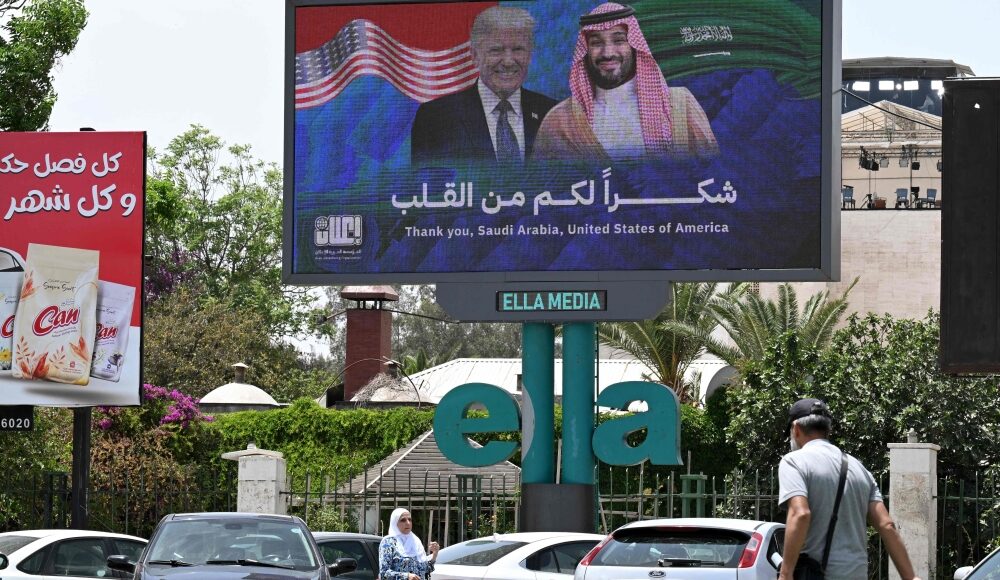MAY 16 — In diplomacy, there are moments that defy conventional wisdom — moments when what was deemed impossible suddenly becomes negotiable. The surprise meeting between US President Donald Trump and Syria’s interim leader Ahmed al-Sharaa in Riyadh on May 14, 2025, was precisely such a moment. It marked the first recognition by a Western power of Syria’s post-Assad transitional government and set in motion the unwinding of over a decade’s worth of paralysing sanctions. But more than that, it hinted at something even larger: the restoration of Syria as a functional state within the Middle East and the wider Mediterranean order.
That possibility, however faint, must not be dismissed. For if peace is ever to take root again in this battered region, the mission impossible must be made possible — by ambition, by urgency, and by a recognition that geography, demography, and history cannot be ignored forever.
The desperation beneath the surface
Behind the headlines lies a humanitarian disaster that dwarfs even the political drama. Over 90 per cent of Syrians now live below the poverty line, with many scraping by on less than USD 2 a day. The once-vibrant souqs of Damascus are now shadows of their former selves; hospitals lack basic antibiotics; schools have collapsed in both infrastructure and curriculum. The fall of the Assad regime in December 2024 has not yet translated into relief for Syria’s people. Instead, the nation remains trapped under the weight of sanctions, broken institutions, and a fractured geopolitical map.
President Trump’s decision to engage al-Sharaa — and to publicly declare the beginning of sanctions relief — is a risky, disruptive move. But it also signals a potentially historic rebalancing of diplomacy in the Middle East. The stakes are high. The alternatives — neglect, isolation, radicalisation — are already realities on the ground.
People walk past a billboard displaying Syria’s interim president Ahmed al-Sharaa and US President Donald Trump with a slogan thanking Saudi Arabia and the United States, in Damascus May 14, 2025. — AFP pic
The weight of sanctions and the clock of despair
Yet the road ahead is neither smooth nor immediate. As Edward Fishman, a former US official and author of Chokepoints, recently observed, “the unwinding of Syria sanctions, which were imposed under a mix of executive orders and statutes, could take months to ease.” The US Treasury Department has experience from the Iran nuclear deal of 2015, when similar relief mechanisms were tested. But Syria is not Iran. And this time, the obstacles are even more entrenched.
Chief among them is the Caesar Syria Civilian Protection Act, passed in 2019 and extended just months before Assad’s ouster. This law does not merely target Assad’s inner circle — it imposes secondary sanctions on anyone doing business with Syria’s military, intelligence services, or reconstruction firms. It effectively discourages even neutral third parties — banks, insurers, logistics operators — from touching Syrian transactions.
And yet, even in this legal quagmire, Trump is moving forward. His gamble is that US presidential authority, backed by Treasury guidance and selective waivers, can create a humanitarian and investment corridor to jumpstart Syria’s recovery. His critics may call it naïve or dangerous. But the reality is starker: if this is not attempted, the geography of the Levant — from the shores of Latakia to the Bekaa Valley — will continue to be a black hole of instability.
The strategic imperative of reclaiming geography
Syria’s geography has always made it too important to abandon. It connects the Mediterranean to Mesopotamia, and historically served as a trade and cultural bridge between Asia, Europe, and North Africa. Today, it lies in ruin, but that very ruin makes it the critical hinge of any long-term regional revival.
Turkey’s stewardship of northern Syria, while pragmatic, cannot by itself rehabilitate the entire country. Lebanon’s fragility, Iraq’s volatility, and Israel’s strategic anxieties all intersect in Syria. No serious regional architecture — from the Arab League to the Eastern Mediterranean Gas Forum — can succeed with Syria excluded or dysfunctional.
This is why Trump’s move must be seen not as rogue adventurism, but as a strategic recalibration. If it leads to even tentative discussions with Israel, phased international recognition, and focused reconstruction, then Syria could re-enter the geopolitical mainstream as a neutral buffer, rather than a proxy battleground.
A cautionary note for Asean
For South-east Asia, and Asean in particular, this is more than a distant conflict. Trump’s willingness to spring diplomatic surprises — whether in North Korea, Afghanistan, or now Syria — should be a warning to never underestimate the fluidity of US foreign policy under his leadership. While Asean is preparing to host major summits with the GCC and China, it must also prepare for external shocks and sudden shifts in alliance patterns.
Asean must ask: if the US can turn its Syria policy on a dime, what might it do in the South China Sea, in Taiwan, or in economic blocs like RCEP or CPTPP? In a world where Trump’s diplomacy no longer plays by Washington’s institutional script, Asia must cultivate both readiness and resilience.
Conclusion: Restoring the forgotten republic
Syria’s reentry into international affairs must not be seen as an endorsement of any one figure or faction. Rather, it must be understood as a rescue of an entire population, long abandoned by geopolitics. If the US under Trump can engineer a phased rollback of sanctions — even within the constraints of the Caesar Act — it would not only save lives, but reshape the region’s balance.
The Middle East cannot move forward with Syria left behind. And Syria cannot survive on slogans and symbolic summits. It needs infrastructure, trade routes, governance, and most of all, hope. That hope, however unlikely, begins with recognising that what once seemed impossible must now be made possible — not out of charity, but because the cost of perpetual collapse is simply too high for the region and the world.
Let Syria rise — not for Assad, not for al-Sharaa, but for its people. Let geography, long ignored, once again become the foundation of peace.
* Phar Kim Beng is a former Harvard fellow and a professor of Asean Studies at the International Islamic University Malaysia. He writes widely on regional diplomacy, civilisational dialogue, and global trade governance.
* This is the personal opinion of the writer or publication and does not necessarily represent the views of Malay Mail.





